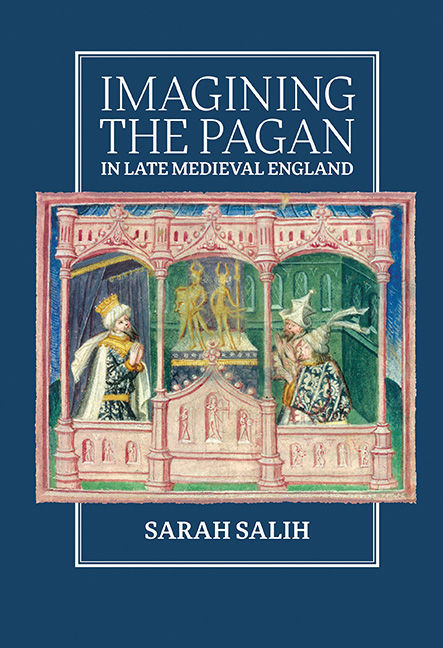Introduction
Published online by Cambridge University Press: 15 October 2019
Summary
Imagining paganity
Thou shalt not make to thyself a graven thing, nor the likeness of any thing that is in heaven above, or in the earth beneath, nor of those things that are in the waters under the earth. Thou shalt not adore them, nor serve them.
The second commandment is all the more terrifying since there is no way to obey it. The only thing you can do to pretend you observe it is to deny the work of your own hands, to repress the action ever present in the making, fabrication, construction, and production of images, to erase the writing at the same time you are writing it, to slap your hands at the same time they are manufacturing.
How did medieval Europe, a culture that filled its halls and churches with images, manage the dissonance of its dual heritage of Biblical iconophobia and classical iconophilia? A specific question about the propriety of devotional imagery opens into a broader one about the relationship between humans and their artefacts. Bruno Latour argues that Western culture sets up, in science, religion and the arts, a false dichotomy between truth and construction, and therefore that we must reject the question ‘Is this made or is this real? You have to choose!’ Until we make this rejection, we are stranded in a state of unknowing of our own culture and its products. The idol – that which is constructed and yet also real – is the concrete emblem of this problem.
Late medieval English culture, I will argue, also made the idol, and thus the pagan who creates and worships it, focal points for thinking about human relations with the past, with human culture, with the material world, with the supernatural. Considering pagans allowed people to examine, to distance, sometimes to deny the process of making realities. The figure of the deluded pagan, who believes the idol he made himself to be a god, is itself an idol: an analysis that is visibly constructed, but nevertheless functional. As Latour puts it, ‘The image warriors always make the same mistake: they naively believe in naive belief.’
- Type
- Chapter
- Information
- Imagining the Pagan in Late Medieval England , pp. 1 - 32Publisher: Boydell & BrewerPrint publication year: 2019



